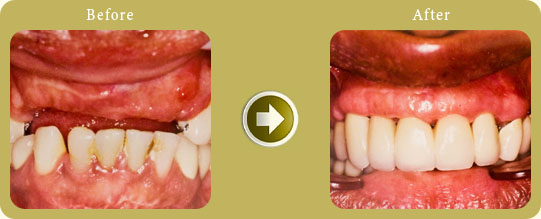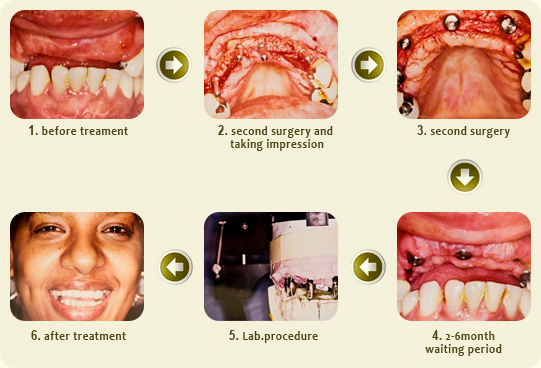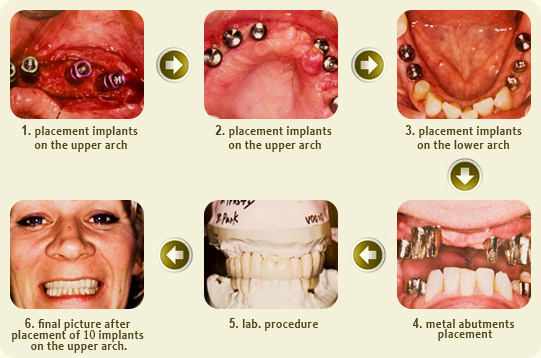|
|
|
|
|
 |
 |
 |
If you are missing several teeth in the same area of your mouth, you may still enjoy the confidence and lifestyle benefits that come with dental implants. Your oral and maxillofacial surgeon will place two or more dental implants, depending on the number of teeth that are missing. Your replacement teeth will be attached to the implants to allow excellent function and prevent bone loss. The implants will serve as a stable support that tightly locks into your replacement teeth and dentures to prevent slipping and bone loss.
With an overall success rate of about 95% and almost 50 years of clinical research to back them up, dental implants are frequently the best treatment option for replacing missing teeth.
|
 |
▶ treatment procedure
|
 |
 |
|
|
Before any implants are placed it is important for your dentist to assess the health of your teeth and gums, if there are any signs of gum disease or decay these must be treated first. Following this your treatment
will be planned following several x-rays and a CT scan in some cases to assess that bone quality and check for nearby anatomical structures to avoid before any drilling. The procedure is usually carried out under local anaesthesia and sometimes IV sedation if it is a long procedure or the patient is very anxious.
The gum where the implant is to be placed is cut and lifted and a small hole is drilled in the jawbone at the precise location of the intended implant.
The titanium implant is tightly fitted into this socket and the gum is stitched back over the implant. If there is insufficient bone material to accommodate the implant a bone graft may be required or alternatively the dentist may use smaller sized mini implants if suitable.
Once the implant has been placed it is left to heal and integrate with the jawbone for between 6 weeks to 6 months.
The bone tissue will grow and anchor itself into the microscopic rough surface of the implant. During this healing period patients are given temporary teeth (bridges) or continue to wear dentures. It is important that any temporary teeth do not exert any forces on the healing implant.
After the healing period the gum is lifted again and a post is attached to the implant with a temporary crown. Four to six weeks later, when the surrounding gum tissue has matured, the final permanent restoration can be fitted to the implant.
 |
 |
How will I know if I have enough bone for implants?Using a combination of dental X-rays and a CT scan (CBCT or 3-D conebeam imaging) your bone density and volume can be assessed as well as information about nearby anatomical structures to avoid such as nerves.
What if I don’t have enough bone for dental implants?
The alternative options for replacing missing teeth include dentures and bridges. However, there are various bone grafting and tissue regeneration procedures that can be carried out to enable treatment with dental implants:
Sinus augmentation if you need to replace missing teeth at the back of the upper jaw then a sinus augmentation, whereby new bone in the sinus is created can increase the height of the bone available for the placement of implants in this area Onlay Grafting this is where a piece of bone from somewhere else is taken and it is secured over an area that is deficient in bone, over time the newly placed bone will fuse with the underlying bone creating a better environment for an implant to be placed. Where can bone be taken from for the graft?The best source of bone for your graft is your own bone tissue from else where in your body and areas that can be used for bone grafts include the chin, back of the lower jaw, the hip and tibia. Bone taken from your own body offers the most viable and faster healing time when compared to alternatives. In many cases a combination of artificial bone substitutes and your natural bone is used. In any bone grafting procedure the grafted bone provides an anchor and stimulus for the existing bone to grow onto, eventually providing an environment suitable for the placement of implants
|
 |
|
 |
|
|
|
|